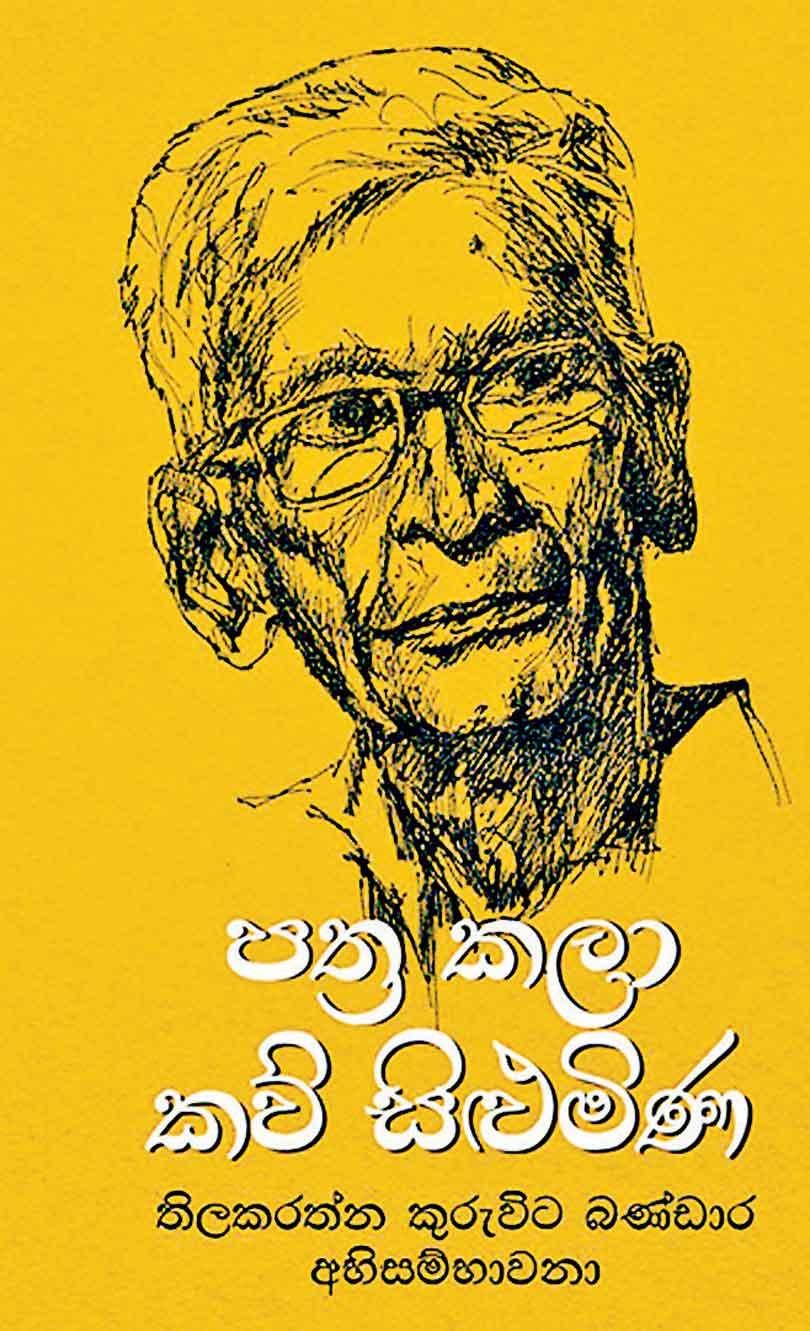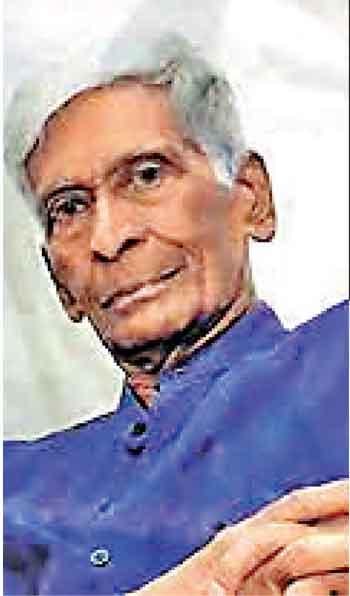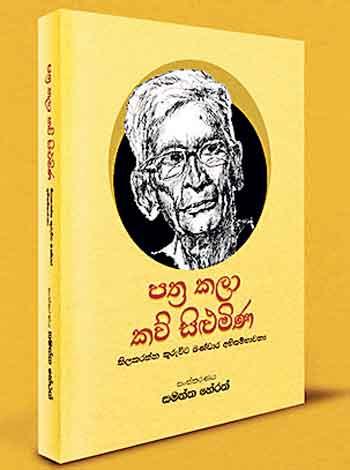Reply To:
Name - Reply Comment

Thilak joined the journalists who returned to Lake House in 1970 and in an era when newspapers remained the only source of information long before the advent of TV and other digital media platforms
 “Paththara Kala Kaw Silumina” is a collection of tributes paid to Thilakaratne Kuruwita Bandara, a scribe who stuck resolutely to journalistic principles at a time when politicians heavily depended on leading newspapers for their propaganda. For his non-compromising stance, Thilak was sacked twice from the editorial chair of the leading newspaper he worked for, ignoring his role in the elevation of standards that boosted its sales records.
“Paththara Kala Kaw Silumina” is a collection of tributes paid to Thilakaratne Kuruwita Bandara, a scribe who stuck resolutely to journalistic principles at a time when politicians heavily depended on leading newspapers for their propaganda. For his non-compromising stance, Thilak was sacked twice from the editorial chair of the leading newspaper he worked for, ignoring his role in the elevation of standards that boosted its sales records.
He was recalled to the same editorial chair when circulation figures took a dip. But because he did not budge from his independent stance, Thilak received marching orders before he reached his retirement age.
 The extensive efforts of Professor Samantha Herath who compiled this volume, unfold the fifty-year oscillating career of a living legend of independent journalism, nurtured by the rich Wijewardene journalistic traditions of Lake House and seen through contributions of about thirty-five, mostly fellow journalists. Their impressions, let’s hope, will help to build robust journalistic traditions.
The extensive efforts of Professor Samantha Herath who compiled this volume, unfold the fifty-year oscillating career of a living legend of independent journalism, nurtured by the rich Wijewardene journalistic traditions of Lake House and seen through contributions of about thirty-five, mostly fellow journalists. Their impressions, let’s hope, will help to build robust journalistic traditions.
The volume includes Thilak’s role as poet, dramatist, composer of songs, writer of short stories and author. In a fond tribute, his younger brother Professor Sunil Ariyaratne thanks him for moulding his life to be of service to society. With journalism being Thilak’s forte, however, the review focused only on his role in journalism.
According to former staffer Daya Lankapura, Thilak was removed from the post of Editor for not bowing down to orders that came almost on a daily basis from a high-handed personality in the then administration. Lankapura, who was Deputy Editor of the newspaper at the time, describes Thilak as a complete journalist who showed leadership in times of crisis. Their efforts at the time were to liberate the newspaper from being the trumpet of the government, which saw a sharp increase in circulation. But, they paid the penalty for their stance, with both Thilak and Lankapura receiving the sack.
One-time colleague Ranga Kalansuriya throws more light on the dismissal. Following the winding up of the mass rally of the then-governing Party, Thilak was given instructions to display its picture prominently on the front page of the newspaper, focusing on the heavy crowds. Thilak consented and accepted the picture. But to keep the page balanced, he used alongside the picture of the Opposition rally, which was as crowded – an act which aroused the wrath of the then government. The Editor duly received the letter of dismissal.
Kalansuriya says within a year of Thilak taking over the newspaper, its circulation shot from 100,000- 300,000. Although the demand was estimated to be around 500,000 copies, with the printing costs exceeding the income, the Management decided to stick to 300,000. Thilak’s hallmark was nourishing the paper with qualitative material. While doing so, he built bridges, presenting readers translations of Tamil poetry titled “Yapa Patuna Kavi.”
 Gamini Weragama calls Thilak, the “Yuga Purushaya” for raising the bar in journalism. In his sweeping view of the journalistic landscape, he says standards are essential to consider a newspaper as a University. He hopes Thilak’s efforts will not be a waste.
Gamini Weragama calls Thilak, the “Yuga Purushaya” for raising the bar in journalism. In his sweeping view of the journalistic landscape, he says standards are essential to consider a newspaper as a University. He hopes Thilak’s efforts will not be a waste.
Thilak’s focus had been on the arts, particularly drama. Sarath Watagedera saw it turned to literature when he was made Editor. He displayed remarkable skills in the selection of material with an emphasis on the use of correct grammar, which was vital for him. And steering clear of gossip, Thilak did not compromise standards – a policy which according to A.D. Ranjit Kumar, former Editor/Sarasaviya, Thilak followed even when he edited the cinema weekly “Sarasaviya.”
Quoting extensively from Thilak’s articles, colleague Percy Jayamanna gives credit to Thilak for advancing the intellect of readers. He calls his articles a treasure trove and commends Thilak’s skill in the writing of titles and captions.
A chapter in Lake House history which made way for Thilak’s entry into journalism, makes interesting reading. S.M. Banduseela writes that the Virakesari Printing Company was bought over by Mr. Esmund Wickremesinghe who was the son-in-law of Lake House founder D.R. Wijewardene and the father of the present President Ranil Wickremesinghe at a time of turbulence in the press world. Lake House was backing the then UNP government and in 1966, Mrs. Sirimavo Bandaranaike’s government made the first attempt to take over Lake House. Mr. Wickremasinghe, who was supporting Dudley Senanayake - government, spearheaded the defeat of the attempt. But it was speculated that Mr. Wickremaesinghe may have realised the need for a group of newspapers to oppose the SLFP-led government in case Lake House was taken over. He set up the Peoples’ Company Ltd. and launched a group of newspapers in all three languages.
Many experienced journalists from Lake House, crossed over to work for the new group of newspapers and other journals. Thilak, an amateur in journalism, being selected on an application sent for an advertisement, joined the Sinhala newspaper “Udaya” and its Poya edition which was then the weekend paper. The group progressed well, but the appearance of several snags made way to shut down the group.
Thilak joined the journalists who returned to Lake House in 1970 and in an era when newspapers remained the only source of information long before the advent of TV and other digital media platforms, he discharged his duties in varied capacities on all the leading Sinhala newspapers until his services were terminated two years before he reached his retirement age.
Commencing journalistic work outside Lake House thereafter, he founded “Mawbima” in 2006 and “Siyatha” in 2008. Political winds at the time caused the closure of both these newspapers. Thilak’s final leg in journalism was at the SLBC, where he served as Advisor and edited the journal “Handa.”